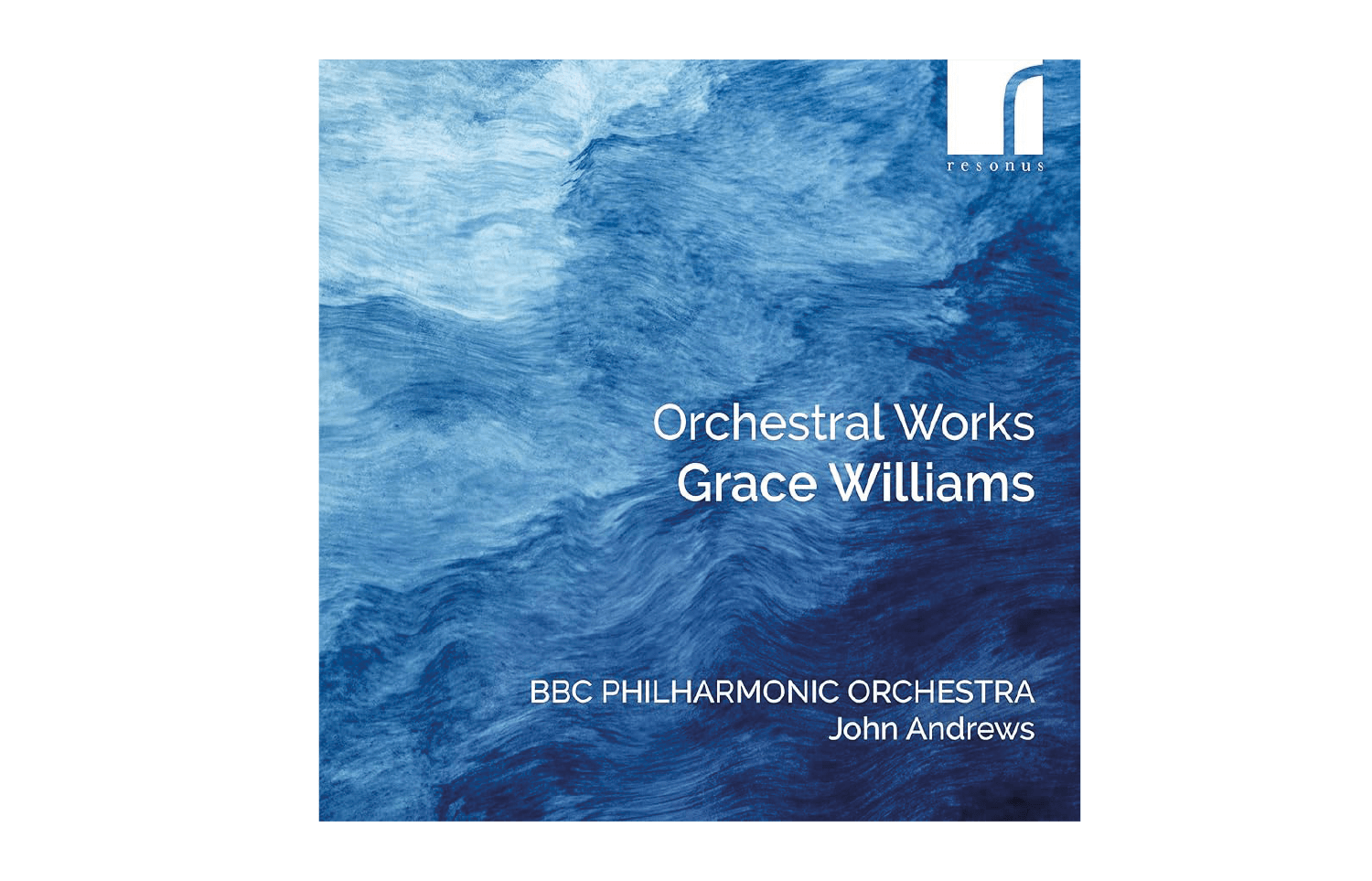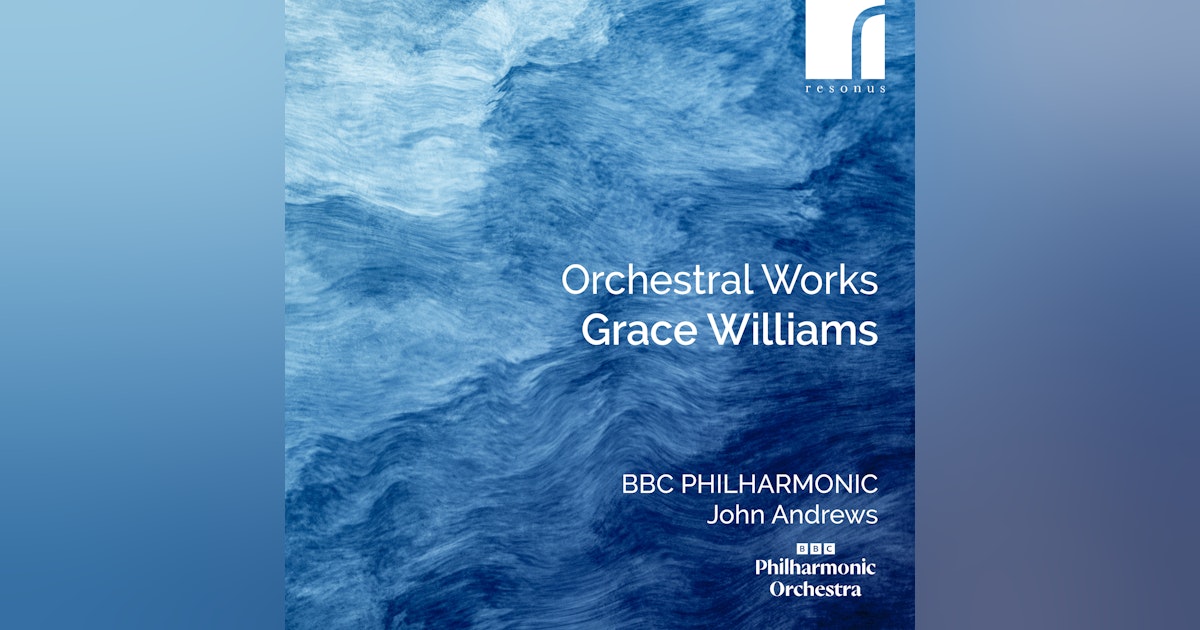
It is great to see attention falling on Welsh composer Grace Williams (1906-77). She was a pupil of Egon Wellesz and Ralph Vaughan Williams.
The ever-enterprising Lyrita label released a fabulous compact disc of orchestral music in around 2004, collating LP performances from 1973 and 1979. You can read my review of Musicweb-Intenational of that release here; there re a couple of links to essays on Grace Willliams at the bottom of that review.
It is good to see John Andres at the helm, too: He coaxes the excellent BBC Philharmonic to strong yet flexible readings of these pieces that span three decades of Williams’ output.
We begin with the Four Illustrations of the Legend of Rhiannon (1939), an orchestral suite. This refers to the famous Welsh Goddess Rhiannon (Wikipedia article). Williams shapes her four “illustrations” loosely into the form of a symphony via a procession of four tone-poems. Certainly there is rigour to the machinations of the frenzied and impassioned first movement, “The Conflict” (between two of Rhiannon’s suitors):
Trumpets announce “The Nuptial Feast” before costly must of ancient times (heard in Williams’ own 20h-cenury garb) offer fascinating contrast:
In the legend, Rhannon has to set at the castle gates and tell her story as penance for alleged infanticide of her son, Pryden. An old Welsh melody (The Old Derby) is used as part of Williams’ musical arsenal (heard on cor anglais and cello) in “The Penance”. This is magnificent music, beautifully played. the only pity is that the cor anglais player appears not to be named in the documentation:
:
Despair not: the child had only actually been taken by a demon (!) and is reunited with its mother in the finale, “The return of Pryden”; Williams uses another Welsh tune here:
This bracing fourth Legend includes some archetypical, almost pastel harmonic progressions from this island, but reframed into a more dynamic perspective, then putted against a determined sequence of fanfares. Andrews keeps the moving, refusing to dwell on the beauty of some harmonic progressions so that momentum is maintained.
Originally intended for the investiture of HRH Prince Charles, Castell Caernarfon (1969) breathes both dignity and pomp. It was the BBC Welsh Symphony Orchestra that premiered the piece (at the ceremony). It was intended for outdoor performance (the BBC musicians were joined by members of th Royal Military School of Music); this is its late concert revision. Influenced by Welsh poetry (especially the Middle Welsh Mabinogion and the atmosphere of Welsh castles) it dos indeed hold a sense of occasion. It is dominated by a Processional (with prominent trumpet part); Andrews’ firm grasp of pulse ensures the performance’s success:
The Four Ballads have appeared on the Lyrita label before with the BBC Welsh Symphony Ocestra under Vernon Handley (see my 2004 review here). Here’s what I wrote about the pieces themselves then:
The four Ballads date from 1968 and were written for the National Eisteddfod (held in her home town of Barry). There is an irresistible warmth to the first (Allegro moderato, alla canzone) that contrasts with the spikier ‘Alla marcia solenne’ (definite shades of Shostakovich here, although the eerie high notes speak to me also of Smetana’s impression of tinnitis in his First String Quartet). Perhaps it is the stillness of the third that impresses the most, with its interruptive, curiously Welsh-sounding fanfares. These interruptions reach a height just over three minutes in; immediately after this is a short horn solo of the most melting beauty which seems to try to make amends. The finale, Allegro furioso, is very, very busy but curiously never over-laden.
The Handley still carries real bite and has just that touch moe immediacy in teh opening Allegro moderato, Falla canzone. The oboe suns beautifully, all wind register with clean lines, and Grace. Of course the recording (1979, originally on BBC Artium prior to Lyrita) loses some sheen on the higher violins, and here their Manchester counterparts in contemporary sound win out. But what lovely clarity to the Lyrita/BBC timpani, and Handley brings just that bit more gravies by adhering more to the ‘moderato’ of the “allegro moderato’.
Here’s the complete Handley (with timings for individual movements edited in) and the Andrews::
I- Allegro moderato, alla canzone (4.34) II- Alla marcia solenne (3.45) III- Andante calmante (5.17) IV- Allegro furioso (3.11)
The second Ballad is marked “Alla Marcia solenne,” and again Andrews’ performance has real cleanliness. His ear for detail is excellent (which I heard live in his Wolf-Ferrari Il segreto di Susanna at Opera Holland Park: review); but again Handley just tips it. The atmosphere of the opening is decidedly more eerie, when Andrews is more literal:
The Andante sostenuto is a proper slow movement under Handley which sings (some phenomenal French horn playing too). Andrews seeks a quieter place of repose at the opening, effectively (the marking is, after all, “Andante calmante”) and marks the dramatic passages well. The BBC Philharmonic discipline is remarkable, too, especially in the strings:
… from “calmante” to “furioso”: the final Ballad is not only furious, but fast and frenetic. Here, Handley’s Welsh forces cope less well, although his performance is undeniably exciting. Andrews seems to relish the rhythmic twists and turns, almost giving the impression of a grotesque dance, and the BBC Phil is on fire:
Finally, the Sea Sketches for String Orchestra: five sea-inspired movements (High Wind; Sailing Song; Channel Sirens; Breakers; Calm Sea in Summer). Williams grew up in a coastal sea so this must have been close to her heart. Williams completed the work in Hampstead, though, during the Blitz.
The five brief movements are incredibly taut, and so convey high amounts in short drains. “High Wind” is appropriately stormy, replete with pungent harmonies while “Sailing Song” is decidedly wistful:
The most remarkable movement is “Channel Sirens”, hard in a performance in which their very spectre-like fabric is palpable. The BBC Philharmonic strings sound fabulous here:
In contrast, “Breakers,” somehow almost pastoral in language. Almost by necessity this is a far more gestural movement, but the opening does feel rather full of stock gestures; it is when a darkening lyricism intrudes that things get interesting. And again it is the contrast that is so effective. Williams is at her most inspired in this piece in the finale, “Calm Sea in Summer,” the BBC Philharmonic doing full justice to Williams’ radiant harmonies. This is, surely, the perfect close to this disc:
I would certainly prefer Williams to the rather upholstered sound and generalised emotive world of Roy Goodman and the Manitoba Chamber Orchestra on their disc Sea Sketches on the CBC label (released around 2000). If you can find it, hough, there is a Lyrita with David Atherton conducting the English Chamber Orchestra in January 1970 (it is on Amazon, but rather pricey).
So what next? That Lyrita disc included the Second Symphony, and I would suggest that as the next point of call. This article by Pamela Blevins gives a good overview of Williams’ life and death, from her birth on February 19/20, 1906 (she was apparently born on the stoke of midnight) to her death just a day before her 71st birthday.
The disc is available at Amazon here; that alternative Sea Sketches on Lyrita is here (a single disc for £19.34). Streaming below.

You can read more about Gracis Wlliams in this excellent article, in addition to th ones at the bottom of the Musicweb-International review.
The Sea Sketches
(1944), composed during the wartime tumult of London,
evoke the longing for her native Barry, Glamorgan, and
cement her status among Britain’s compositional elite. The
Ballads mark a return to Welsh mythos, with movements
inspired by the emotional and cultural essence of her
homeland.
• This release pays homage to Williams’ legacy, celebrating
her as one of the premier Welsh composers of the twentieth
century.





